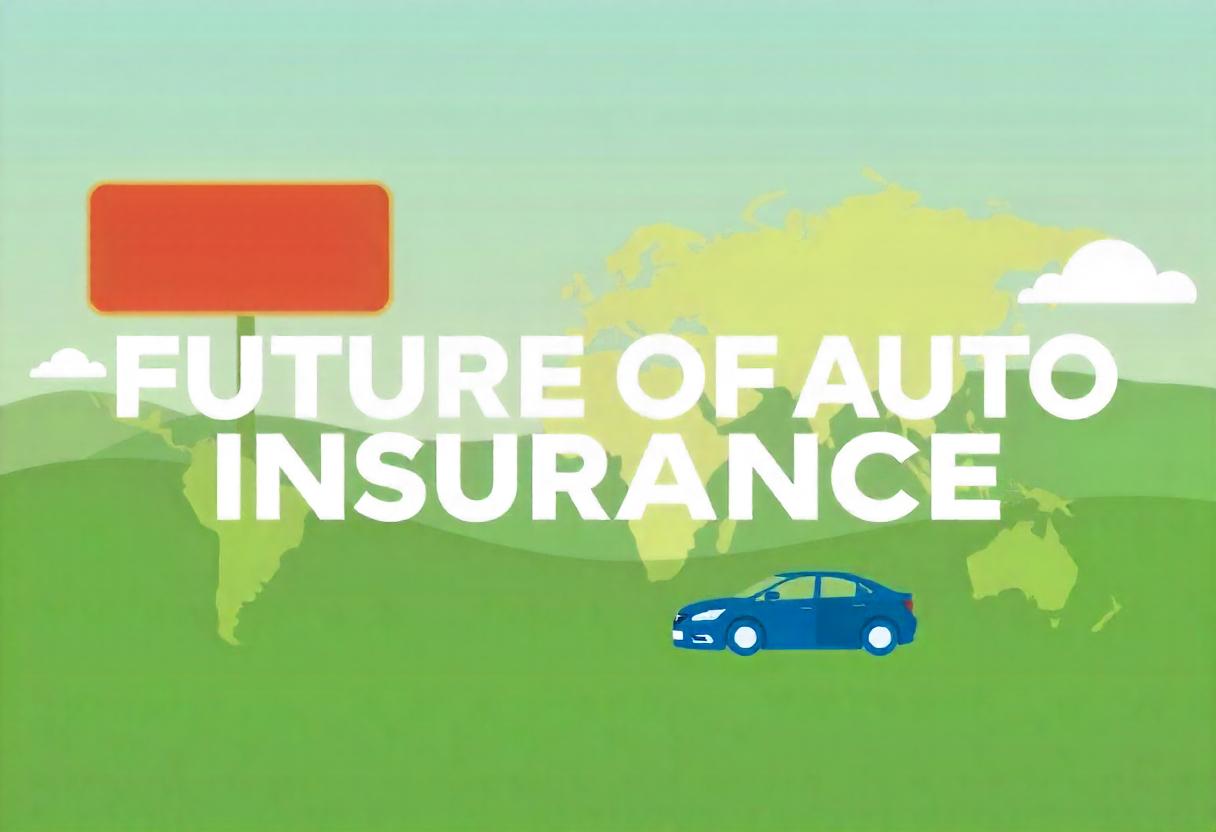The auto insurance business is drastically changing, more so with advancements of technology into artificial intelligence. Traditionally, this was a no-nonsense business: the driver paid premiums upon, among other things, age, history of driving, and location; in case of an accident, they filed for a claim to cover repair or medical charges, respectively. However, AI in the present situation is changing the very landscape of how insurers judge risk, process claims, and even engage with customers. The effect of AI in auto insurance revolves not only around being more effective but pushes it toward personalization, fairness, and better prediction.
This article will focus on how AI changes the auto insurance sector. It considers key areas such as risk assessment, claims management, customer service, and future changes in the nature of driving.
AI-Based Risk Profiling and Underwriting
The aspect of risk assessment and underwriting in auto insurance is perhaps the single most impactful that AI is having on this business line. Tradition justifies the use of common historical data, such as age, credit score, and even vehicle type, plus the driving record, as a gauge for the degree of risk and calculation of premiums. These methods are generalized and would not put into consideration real-time driving behavior.
AI unlocks the ability of insurers to use telematics, referring to the devices or applications installed into cars to monitor their driving in real-time. Using these devices, an insurer evaluates how drivers interact with their cars, gather data on speed, braking patterns, frequency of trips, the time of day, and even check frequency while driving. It helps develop risk profiles which can then translate to more tailored pricing for safe drivers while costlier for riskier drivers.
It matters because AI-powered risk assessment results in more precise pricing models. Rather than relying on generalised data based on demographics, drivers will pay according to how they actually drive. Such would lead to more safety behaviors from the part of the driver and insurance benefits for both parties.
Customized Insurance Policies
This also enables insurers to create usage-based insurance, more commonly known as pay-as-you-drive or pay-how-you-drive insurance. The difference between UBI policies is that they adjust your premium according to how much and how well you drive, using real-time data. So, a less frequent driver or a safer, for example, one who does not speed and brake hard, probably would have cheaper insurance, in comparison with an aggressive driver.
The other type of UBI enabled by AI is pay-per-mile insurance. In this model, it charges drivers for the exact number of miles covered and proves to be cost-effective when drivers barely use their cars. In real-time, AI processes information about driving through telematics to adjust premiums accordingly, affording further scope for more flexibility and customization options to policyholders.
AI in Claims Processing and Settlement
The entire claims process has been a contentious issue between insurers and their clients for years. This traditional process is time-consuming and cumbersome with paper work, human error, and long waiting times. AI is changing everything since it automates much of the claims management process.
For example, if there is an accident, the driver can now take photos of the damages through AI-powered apps. Computer vision technology analyzes these pictures in real-time, determines the level of damage, and gives automatic estimates of repair costs. This reduces the need for an adjuster to inspect the vehicle personally and hastens the entire process of the claim.
Further, with data coming in from connected cars, dash cams, or any traffic camera, AI could determine fault in accidents. In the light of patterns drawn from this data, AI would enable better assessment of what happened within a much shorter time frame less likely to lead into disputes and therefore enable quicker decisions from the insurer’s side.
Customer Support and Chatbots
AI is also rewriting the technical aspects of auto insurance and, on the flip side, customer service. Increasingly, chatbots or virtual assistants are used for some of the most mundane questions raised by customers, such as policy details, claims filing, or getting quotes. AI tools, in this case, work round the clock and process thousands of questions at the same time, thus greatly improving response times to the customers.
Advanced AI chatbots could understand natural language, so customers can talk to them in a more conversational way rather than just look for the correct keyword. With every encounter, over time, these systems learn from it and continually improve their response in providing solutions and answers much more personalized. For example, a chatbot may recommend policy updates related to changes in driver behavior, or alert them to discounts they are entitled to, based on their driving history.
Fraud Detection and Prevention
Auto insurance fraud is an enormous headache: It costs billions of dollars each year. Whether it’s exaggerated claims, hyper-bloated damage, or pretend car wrecks, frauds get the honest policyholder to pay additional premiums. Indeed, AI turns out to be a pretty effective weapon against insurance fraud.
Utilizing machine learning, artificial intelligence systems can also detect some claims data patterns or behaviors that may indicate fraudulent activity. An AI might flag a claim, for instance, because it sees discrepancies between what the claimant is saying in the storytelling and the facts that a review of background information about that claimant would reveal, or it identifies several similar claims filed within the same time period from the same individual.
It uses AI to identify staged accidents by analyzing vehicle data, video footage, and time-specific events. In some cases, AI allows cross-checking against social media activities in order to determine whether or not a claim is real.
Autonomous Vehicles and AI-Driven Insurance Models
The development front of the auto industry is most interesting with the emergence of autonomous vehicles, or AVs. While self-driving cars become increasingly prevalent in society, the whole landscape of auto insurance will change and AI will be at the vanguard of this evolution.
The driverless cars do not only make use of many different kinds of sensors and AI systems to navigate through roads but also take real-time decisions not to have an accident. For the first time, a challenge for insurers has been raised about calculating the levels of risk in a scenario where the car is doing the driving. Who gets blamed for an accident-the human passenger or the AI system controlling the vehicle?
These changed scenarios in insurance will have to undergo high application of AI, especially in mitigating these new risk types. For instance, the aviators may use time-differentiated data from AVs for performance monitoring and to determine incidents where the car’s AI system is to blame. In some instances, responsibility for provision of insurance for autonomous cars will be split between insurance providers and car manufacturers.
Predictive Analytics and Future Risk Mitigation
No more reacting; AI will also predict and prevent future risks and accidents. With large amounts of information on weather and traffic conditions as well as driver behavior, AI would go a long way to help insurers at the prime decision-making stage, that is, before accidents happen.
One such application includes accident-prone areas based on certain types of weather conditions using predictive analytics and adjusting the insurance premia based on it. AI can also send warnings in real time to drivers on certain high-risk situations such as dangerous road conditions or route suggestions to avoid accidents altogether.
Predictive models also help the insurer predict what is going to happen tomorrow or the next day, for instance, how changing driving habits-for example, the rise of ride-sharing or electric vehicles-are going to influence claims and risk levels. This enables them to adjust their policies proactively, rather than waiting for the trends to emerge.
AI and Environmental Impact in Auto Insurance
Sustainability has been a growing focus on many industries and, of course, on the auto insurance industry. AI can help insurers respond to the particular element of driving’s environmental impact in encouragement of environmentally friendly behaviors. For example, some companies provide a green driving discount to their policy holders who prefer driving electric or hybrid automobiles, or indeed those who practice consumption with fuel efficiency.
The efficiency of AI also aids in the monitoring of carbon emissions through patterns of driving. For example, an insurance provider can incentivize driving through rewards to not make junk runs, to carpool frequently, or to travel at optimal fuel speeds.
Insurers can also use AI to make operations leaner. This includes less paper consumption and more efficient usage of other resources. Virtual inspections, AI-based customer service, and digital claims processing all add up to a greener insurance industry.
Why it matters: AI empowers insurers to promote green driving and increase operational efficiency-toward a more sustainable, greener future.
AI-enabled cooperation with car manufacturers
AI is bringing the insurance companies and the car manufacturers closer together than ever before. The connected cars and the self-driving cars are now driving further innovation in data transfer between manufacturers and insurers in the interest of safety and accident reduction while further empowering these manufacturers to provide customized insurance products.
For instance, car manufacturers can share car data in real-time with their insurance companies for better risk assessment and premium pricing. In some cases, there are direct partnerships with the car manufacturers; the insurers may even provide integrated insurance policies when a brand new vehicle is purchased. It is quite likely that the insurance policy would be automatically and periodically updated based on the performance and usage information of the car.
The Road Ahead: A Future Defined by AI
Undeniably, AI’s influence on the future of auto insurance will be immense-from personalization of policies and claims processing through automated means to predictive analytics and autonomous vehicles itself, AI changes every aspect of the work done in auto insurance. These promise to make auto insurance a far more efficient, yet transparently fair, tool for drivers and help insurers mitigate risks and cut costs.
As AI technology keeps getting more advanced day to day, more innovative applications would remain to be written in the auto space for insurance coverage. Whether it is new forms of coverage for emerging technologies like self-driving cars, or better methods of fraud, there is sure to be a great future in the industry for AI.
Conclusion
It is fundamentally changing the auto insurance industry. From how insurers appraise risk and how to process claims to how they reach out to customers and prevent fraudulent acts, AI enhances efficiency, accuracy, and personalization at every step. As technology continues to evolve, the strides of AI in auto insurance shall continue to grow and benefit the insurer to offer customers better, tailored services, thereby making the roads safer for all.
The Future of Auto Insurance-AI Changes the Game for Both Parties, Says Alan K Sabbath. Well, either it’s smarter risk assessments, faster claims processing, or predictive analytics- something the AI is definitely paving the road for a very efficient, fairer, and customer-friendly auto insurance experience.


Customized Insurance Plan Amazing
impressive
great article
Fantastic Article
Attractive content
Intresting for read
well content
wonderful content
great content
great work
intresting content
great content ever
great content
Best written
attractive content
intresting for read good content
attractive content
well content
well content
great content
great content
Good
well content